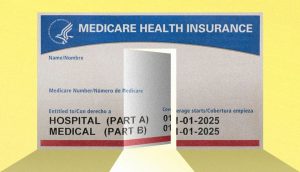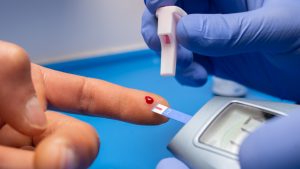Understanding how to read food labels is crucial for making informed decisions about what you eat. Labels not only help you choose foods that align with your health goals but also allow you to avoid unwanted ingredients and improve your overall well-being. In this guide, we’ll break down how to interpret information on food labels so you can make healthier and more conscious choices.
1. Understanding Nutritional Information
The nutritional information section on a food label provides details about the nutrient content of a product. Here are the key elements to review:
a. Serving Size:
- What Is It? The serving size is the standard amount of food on which the nutritional values are based.
- Why Is It Important? Serving sizes can be misleading. Make sure to adjust the numbers based on the actual portion size you consume.
b. Calories:
- What Are They? Calories indicate the amount of energy the food provides.
- Why Are They Important? Monitoring calorie intake can help maintain a healthy weight. Consider not just calories but also the quality of nutrients.
c. Total Fat:
- What Is It? The total amount of fat in a serving, including saturated and trans fats.
- Why Is It Important? Choose foods with lower saturated and trans fats, as they can increase the risk of heart disease.
d. Saturated and Trans Fats:
- What Are They? Saturated fats are found in animal products and some plant oils, while trans fats are found in processed foods.
- Why Are They Important? Saturated and trans fats can raise LDL (bad) cholesterol levels in the blood. Opt for foods low in these fats.
e. Cholesterol:
- What Is It? Cholesterol is a waxy substance in the blood that can contribute to plaque buildup in the arteries.
- Why Is It Important? High cholesterol intake can increase the risk of heart disease. Choose foods with low cholesterol content.
f. Sodium:
- What Is It? Sodium is a mineral found in salt.
- Why Is It Important? Excess sodium can contribute to hypertension and heart issues. Look for foods with low sodium content.
g. Total Carbohydrates:
- What Are They? The total amount of carbohydrates in a serving, including sugars and fiber.
- Why Are They Important? Carbohydrates are a primary source of energy. Choose complex carbohydrates and those high in fiber.
h. Sugars:
- What Are They? Sugars include both natural and added sugars.
- Why Are They Important? Added sugars can contribute to weight gain and metabolic problems. Opt for foods with lower added sugar content.
i. Dietary Fiber:
- What Is It? Fiber is a type of carbohydrate that is not fully digested.
- Why Is It Important? Fiber is crucial for digestive health and can help you feel fuller longer. Look for foods high in fiber.
j. Protein:
- What Is It? The amount of protein in a serving.
- Why Is It Important? Protein is essential for tissue repair and muscle function. Ensure adequate protein in your diet.
2. Reading the Ingredient List
The ingredient list provides information about what is actually in the product. Here are some guidelines for interpreting it:
a. Ingredient Order:
- What Is It? Ingredients are listed in descending order by quantity in the product.
- Why Is It Important? The first ingredients listed are the most predominant. Look for foods with healthier ingredients at the top of the list.
b. Hidden Ingredients:
- What Are They? Some ingredients may be hidden under different names, such as high fructose corn syrup or partially hydrogenated oil.
- Why Is It Important? These ingredients may be less healthy. Familiarize yourself with alternative names to identify these additives.
c. Avoid Unwanted Ingredients:
- What Are They? Ingredients like artificial colorings, preservatives, and added sugars.
- Why Is It Important? These ingredients may have negative health effects. Opt for products with simpler, more natural ingredient lists.
3. Understanding Health Claims
Health claims on labels can be useful, but they should be interpreted carefully:
a. “Low in Fat”:
- What Does It Mean? The product has a lower fat content compared to similar items.
- Why Is It Important? This doesn’t always mean the product is healthy. Check the ingredient list and sugar content.
b. “No Added Sugar”:
- What Does It Mean? No sugars have been added during production.
- Why Is It Important? The product may still contain natural sugars or sweeteners. Review nutritional information and the ingredient list.
c. “Rich in Vitamins and Minerals”:
- What Does It Mean? The product contains significant amounts of certain vitamins or minerals.
- Why Is It Important? This can be beneficial, but also ensure the product isn’t loaded with unhealthy sugars or fats.
4. Tips for Making Healthy Choices
a. Compare Products:
- What Is It? Review and compare nutritional information and ingredients of similar products.
- Why Is It Important? Comparing helps you choose healthier options and make adjustments in your diet.
b. Opt for Unprocessed Foods:
- What Is It? Choose fresh and minimally processed foods.
- Why Is It Important? Less processed foods are generally more nutritious and contain fewer unwanted additives.
c. Control Portion Sizes:
- What Is It? Adjust portions according to your health needs and goals.
- Why Is It Important? Controlling portions helps maintain dietary balance and prevent excessive calorie consumption.
Conclusion
Reading and understanding food labels is a fundamental skill for making healthy and informed decisions. By familiarizing yourself with nutritional information, ingredient lists, and health claims, you can choose foods that align with your well-being goals and maintain a balanced diet. With practice and attention, you can select foods that support a healthier and happier lifestyle. Start applying this knowledge today and see the positive impact on your diet and health!
E4 Helps you:
At E4, we’re dedicated to revolutionizing how people manage type 2 diabetes through our innovative E4 Alive program. Our team of specialists has joined forces to create a comprehensive solution aimed at empowering individuals to take charge of their health journey. With personalized support and resources tailored to each person’s unique needs, we make managing diabetes simpler and more effective than ever before.
E4 Alive offers a range of tools and resources to help you better understand and control your blood sugar levels. Our program provides personalized guidance to create a healthy eating plan and integrate regular physical activity into your daily routine. Plus, you’ll have access to a supportive community of individuals who understand your challenges and are there to offer encouragement and guidance every step of the way.
By joining E4 Alive, you can effectively manage your blood glucose levels, improve long-term glycemic control, reduce your risk of diabetes-related complications, and enhance your overall quality of life. It’s not just a program; it’s an opportunity to reclaim your health and vitality. Ready to start your journey to better health? Visit THIS PAGE to learn more about E4 Diabetes Solutions and the E4 Alive program.
To learn more about E4 Diabetes Solutions and the E4 Alive program, visit THIS PAGE.

Type 2 Diabetes: Is It Really Reversible?
A recent National Geographic article [link] explores how type 2 diabetes could be reversible with the right approaches. This condition, which affects millions of people worldwide, has long been considered a chronic and progressive disease. However, recent research challenges this perception and suggests that with lifestyle changes and the right approach, remission is possible. The

How Do GLP-1 Drugs Compare? A Breakdown of Ozempic, Mounjaro, and Trulicity
GLP-1 receptor agonists have revolutionized diabetes management, with drugs like Ozempic, Mounjaro, and Trulicity leading the market. But how do these medications compare in terms of effectiveness, side effects, and patient outcomes? Let’s explore their differences and what they mean for diabetes patients. Understanding GLP-1 Medications GLP-1 receptor agonists mimic a natural hormone that helps

Why Has Medicare Spending on Diabetes Medications Skyrocketed in 5 Years?
In the past five years, Medicare spending on diabetes medications has increased nearly fivefold, reaching $35.8 billion in 2023. This surge has been primarily driven by the growing use of GLP-1 drugs such as Ozempic, Mounjaro, and Trulicity. But what is behind this cost escalation, and how does it affect patients and the U.S. healthcare

The Gut Microbiota and Blood Sugar Control: A Hidden Connection
The human gut is home to trillions of bacteria that play a crucial role in digestion, immune function, and even metabolism. Recent research has revealed a fascinating link between the gut microbiota and blood sugar regulation, shedding light on how the balance of microbes in our intestines can influence diabetes risk and overall metabolic health.

The Dawn Phenomenon: Why Blood Sugar Rises While You Sleep
For many people with diabetes, waking up with high blood sugar levels can be frustrating—especially if they didn’t eat anything overnight. This early-morning spike in blood glucose is known as the Dawn Phenomenon, and it happens due to natural hormonal changes in the body. But why does it occur, and how can it be managed?

The Influence of Red Light on Blood: Can It Improve Diabetes?
Type 2 diabetes is a metabolic disease characterized by insulin resistance and elevated blood glucose levels. In the search for complementary alternatives to improve glycemic control, red light therapy has gained attention due to its potential to enhance circulation, reduce inflammation, and optimize cellular function. But what does science say about it? ✨ What is

